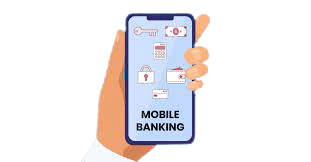
Digital transformation in SACCOs cannot stand as an exception in the world of finance where digital transformation is a buzzword in recent years.
Generally, digital transformation involves the integration of digital technology into all areas of an organization. This includes SACCO‘s operations, processes, and services.
SACCOs (Savings and Credit Co-operative Organizations) have been at the forefront of providing financial services to their members. However, the emergence of digital technology has forced them to rethink their operations and services.
Digital transformation is just a wholesome change in operations. Therefore, it not only involves the implementation of new technologies but also involves a change in mindset, culture, and processes. As a result of this, SACCOs need to be innovative and agile to adapt to the changing digital landscape.
In this article, we will discuss key strategies and best practices for SACCO members to embrace digital transformation.
Adopt a Customer-Centric Approach
A customer-centric approach involves putting the member’s needs and preferences at the center of the digital transformation process.
In the digital age, customers have high expectations of the services they receive and therefore, over time, they have become more demanding. This not only applies to customers but also to SACCOs as they aim to transform their operations to meet the unique needs and preferences of their members. This has pushed SACCOs to adopt a customer-centric approach that focuses on delivering personalized services and experiences to their members.
In order to adopt this, SACCOs need to understand their members’ needs through surveys, focus groups, or social media. This will enable them to provide a seamless digital experience across all their platforms and ensure that they are user-friendly and easy to navigate.
Another key aspect of a customer-centric approach is personalization. This involves the use of data analytics to provide tailored services and communications to members.
In addition to that, SACCOs need to provide 24/7 support to their members. This can be made possible through leveraging digital technologies such as mobile apps, social media, and chatbots to interact with members. This helps to build a stronger relationship with the members and ensures that they can access support anywhere, anytime, and on any device.
By adopting a customer-centric approach to digitizing operations, SACCOs can build stronger relationships with their members, provide better experiences and remain competitive in the digital age.
This is therefore crucial in nurturing the saving culture among the members of the SACCO. As they are confident in the process and the seamless approach.
Embrace Mobile Banking
Mobile banking has become a game-changer in the financial industry. This is because it has become an essential aspect of financial services.

SACCOs in particular can greatly benefit from embracing mobile banking in their digital transformation process.
Here are some of the benefits of embracing mobile banking in digitizing SACCOs:
- Convenience and accessibility: By making use of mobile banking, members can access financial services anytime, anywhere, and on any device. Members can also check their account balances, transfer funds, pay bills, and access other services using their mobile phones.
- Cost savings: By reducing the need for physical branches, mobile banking can help SACCOs save on costs. This is because members can access services without visiting a physical branch, thus SACCOs can reduce their operational costs.
- Improved member engagement: Mobile banking provides a member with a more interactive and personalized experience thus improving member engagement. Therefore, SACCOs can use mobile banking to send targeted messages, promotions, and offers to members based on their preferences and behavior.
- Enhanced security: By making use of advanced security features such as biometric authentication, encryption, and fraud detection, mobile banking offers advanced security features. This helps to protect members’ information and prevent fraud.
Therefore, embracing mobile banking is a key strategy that SACCOs can use to digitize their operations and meet the changing needs and preferences of their members. By offering mobile banking services, SACCOs can improve member engagement, reduce costs and enhance the overall member experience.
Leverage Data Analytics
Data is the new oil in the digital age. It is incredibly beneficial when considering the digital transformation of SACCOs.
By analyzing member data, it is possible to identify, their behavior, preferences, and needs. This is crucial in enabling SACCOs to tailor their needs to fit their members.

Data analytics is also important during fraud detection. It is possible to notice fraudulent activity such as multiple loan applications from the same person. Also, any anomalies during loan repayments can also be detected.
It is also possible to do marketing and customer engagement. Therefore, data analytics can be used to develop targeted marketing campaigns and personalized customer engagement strategies that are more likely to resonate with members and result in higher engagement and satisfaction.
Overall, leveraging data analytics can help SACCOs improve their operational efficiency, increase member satisfaction, and drive growth and profitability.
Provide Financial Education
Digital transformation is not just about technology; it also involves educating members on the benefits of digital services. Therefore, providing financial education is an important component of digitizing SACCOs.
The SACCO leaders can ensure that this is achieved so as to ensure proper mentorship of their members.
SACCOs should provide training and support to members on how to use mobile banking apps, online payment systems, and other digital services. This can be done through the use of a variety of channels, including online resources, seminars, workshops, and one-on-one counseling
SACCOs need to provide financial education to their members on the use of digital platforms and how to stay safe online. This helps to empower members by providing them with the knowledge and skills they need to manage their finances effectively. When SACCOs provide financial education to their members, they can build trust and loyalty. Also, an increase in their members’ financial literacy can be enhanced. This in turn can lead to better financial decision-making.
By providing financial education, SACCOs can improve member engagement, increase financial literacy, improve financial performance, and gain a competitive advantage in the market.
Embrace Digital Marketing
In the digital age, marketing has gone digital. In fact, fintech companies are disrupting the financial industry with innovative solutions. The solutions are largely transforming the way financial services are delivered. For example, digital solutions such as WebSacco serve to ensure that SACCO activities are digitized and member experience made efficient.

This, therefore, poses a challenge for SACCOs to partner with fintech companies. The main purpose of this is to leverage their expertise, technologies, and solutions to enhance their services. By embracing technology, SACCOs can therefore incorporate digital marketing to reach their target audience effectively.
This will enhance ease in engaging with their members and also promoting their services.
In conclusion, digital transformation is an inevitable trend in the financial industry, and SACCOs need to embrace it to remain competitive and relevant. SACCO members should be at the forefront of this transformation. This can be done by adopting a customer-centric approach, embracing mobile banking, leveraging data analytics, providing financial education, partnering with fintech companies, and embracing digital marketing. Digital transformation is not just about implementing new technologies. It is a mindset shift that requires SACCOs to be innovative, agile, and customer-centric. SACCOs that embrace digital transformation will not only survive but thrive in the digital age.
Other links:

One thought on “Digital Transformation in SACCOs: 5 Key Strategies and Best Practices”